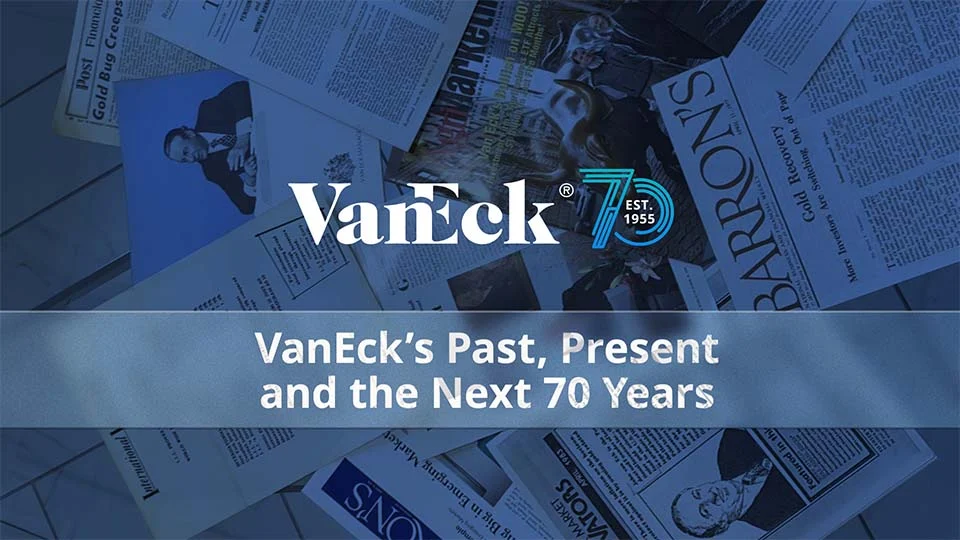China: From Drip to Rising Tide
27 March 2019
Jan van Eck, CEO, shares his investment outlook.
Coming into 2019, investors faced two important questions: What are central banks doing, and what is happening with Chinese and global growth?
At the beginning of December, we were worried about the impact the European Central Bank’s (ECB’s) and the U.S. Federal Reserve’s (Fed’s) continued tightening would have on the financial markets. Typically, central bank tightening is unfavorable for financial assets, and markets decelerated going into December.
Then, suddenly the Fed signaled it would stop raising rates and reverse on quantitative tightening. This led to a rally in U.S. equities and other asset classes, but I view it as a glass half empty for the following reasons.
Europe Reacts to ECB Tightening
As soon as the ECB initiated a little bit of quantitative tightening, in the second week of December, the financial markets started performing poorly. For demographic and other reasons, Europe’s sustainable growth rate may only be zero, which indicates that it is not a significant contributor to global growth. However, it is very important in the global trade and financial systems.
European Markets Seized Up Following ECB Tightening
Eurozone Manufacturing PMI

Source: Bloomberg.
The tightening by the ECB had a major impact, and I think the Fed’s decision to ease was made reluctantly. The Fed was also concerned about global economic growth rates, especially in Europe and in China. The financial markets have been going up since January, but I think investors should note that the Fed acted out of concern. Likewise, investors should watch these risks carefully.
The ECB is also now changing course and moving to ease. At its March 7 policy meeting, the ECB pushed back its timing for increasing interest rates and is expected to stay on hold through the end of 2019. It also announced a program to stimulate bank lending, with another round of targeted longer-term refinancing operations (TLTRO) launching in September. TLTRO loans from the ECB provides banks in the euro zone with cheap rates.
China’s Drip Stimulus Kicking in on Schedule
At the end of last year, we said, “Don’t fight the PBOC,” which was an oversimplification of the fiscal, tax-oriented, and monetary steps being taken in China. We call it a “drip stimulus” because, rather than a big infrastructure stimulus program similar to what was implemented after the financial crisis, this was meant to be a more moderated program.
Our expectation in December was that this stimulus would kick in around Q1 and Q2 of 2019, and it looks like we are on schedule for that. I think this is good news for Chinese equity investors in 2019, and I think it is just the beginning.
Drip Stimulus Taking Effect in China?
China Composite PMI1

Source: Bloomberg.
Portfolio Implications
We always argue for diversification, though international diversification has admittedly been a tough story to tell for the last 10 years. The U.S. was going in one direction while the rest of the world was moving sideways. However, diversified investors have been rewarded over the last three to six months.
The fourth quarter of 2018 was difficult for U.S. stocks, but emerging markets debt was flat and gold was up. And despite the trade headlines, emerging markets equities outperformed U.S. equities.2 So, while the U.S. economy may still be considered the strongest in the world, being balanced and continuing in a normalized interest rate environment, investors should stay diversified, especially in light of a likely cyclical upswing in China.
IMPORTANT DISCLOSURE
1PMI – Purchasing Managers’ Index: economic indicators derived from monthly surveys of private sector companies
2MSCI Emerging Markets Index vs S&P 500 Index
The MSCI Emerging Markets Index captures large- and mid-cap representation across 24 Emerging Markets (EM) countries. The index covers approximately 85% of the free float-adjusted market capitalization in each country.
Important Disclosure
This is a marketing communication. Please refer to the prospectus of the UCITS and to the KID before making any final investment decisions.
This information originates from VanEck (Europe) GmbH, which has been appointed as distributor of VanEck products in Europe by the Management Company VanEck Asset Management B.V., incorporated under Dutch law and registered with the Dutch Authority for the Financial Markets (AFM). VanEck (Europe) GmbH with registered address at Kreuznacher Str. 30, 60486 Frankfurt, Germany, is a financial services provider regulated by the Federal Financial Supervisory Authority in Germany (BaFin).
The information is intended only to provide general and preliminary information to investors and shall not be construed as investment, legal or tax advice VanEck (Europe) GmbH, VanEck Switzerland AG, VanEck Securities UK Limited and their associated and affiliated companies (together “VanEck”) assume no liability with regards to any investment, divestment or retention decision taken by the investor on the basis of this information. The views and opinions expressed are those of the author(s) but not necessarily those of VanEck. Opinions are current as of the publication date and are subject to change with market conditions. Certain statements contained herein may constitute projections, forecasts and other forward-looking statements, which do not reflect actual results. Information provided by third party sources is believed to be reliable and have not been independently verified for accuracy or completeness and cannot be guaranteed. Brokerage or transaction fees may apply.
All performance information is based on historical data and does not predict future returns. Investing is subject to risk, including the possible loss of principal.
No part of this material may be reproduced in any form, or referred to in any other publication, without express written permission of VanEck.
© VanEck (Europe) GmbH / VanEck Asset Management B.V.
Sign-up for our ETF newsletter
Related Insights
Related Insights
21 July 2025
21 July 2025
13 December 2024
06 August 2024
01 May 2024






